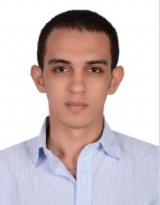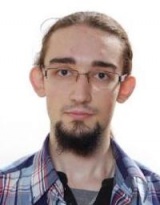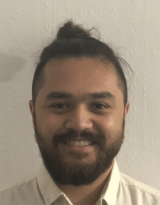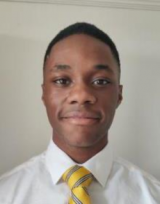Difference between revisions of "People"
m (→Group Members:) |
m (→Group Members:) |
||
| Line 15: | Line 15: | ||
Marcus Newton is an Associate Professor and leader of the Coherent X-ray Science Group. His reseach is focussed on the study of quantum materials at the nanoscale using coherent x-rays. He is a pioneer in the field of x-ray diffraction imaging for the study of nanoscale quantum materials. He also collaborates with a number of industry partners to develop materials and devices for next generation technologies that make use of quantum materials. | Marcus Newton is an Associate Professor and leader of the Coherent X-ray Science Group. His reseach is focussed on the study of quantum materials at the nanoscale using coherent x-rays. He is a pioneer in the field of x-ray diffraction imaging for the study of nanoscale quantum materials. He also collaborates with a number of industry partners to develop materials and devices for next generation technologies that make use of quantum materials. | ||
| − | He has many years experience in delivering lecture series courses on 'Crystalline Solids' (PHYS3004), ‘Applied Nuclear Physics’ (PHYS3009) and ‘Computer Techniques in Physics’ (PHYS6017) as a part of the undergraduate teaching programme. He is also co-author of the third edition of | + | He has many years experience in delivering lecture series courses on 'Crystalline Solids' (PHYS3004), ‘Applied Nuclear Physics’ (PHYS3009) and ‘Computer Techniques in Physics’ (PHYS6017) as a part of the undergraduate teaching programme. He is also co-author of the third edition of [[textbook|Introductory Solid State Physics]], an undergraduate text book on condensed matter physics to be published by Taylor & Francis. |
| − | Marcus is author of the [[Bonsu| | + | Marcus is author of the [[Bonsu|Interactive Phase Retrieval Suite]], the first software package that allows for real-time visualisation of the reconstruction of phase information in both two and three dimensions. This is the most popular software tool for phase reconstruction of Bragg CDI data and is routinely used at various synchrotron facilities including the Diamond Light Source, the European Synchrotron Radiation Facility (ESRF) and the Advanced Photon Source (APS). It has provided Coherent Diffraction Imaging scientists with a step improvement in the efficiency of data analysis through automation and ease of use. |
==== Undergraduate Teaching ==== | ==== Undergraduate Teaching ==== | ||
Revision as of 14:39, 31 May 2022
Group Members:
Dr Marcus C. Newton BSc (London), PhD (UCL), MInstP, FHEA
Associate Professor of Physics
UKRI Future Leader Fellow
Marcus Newton is an Associate Professor and leader of the Coherent X-ray Science Group. His reseach is focussed on the study of quantum materials at the nanoscale using coherent x-rays. He is a pioneer in the field of x-ray diffraction imaging for the study of nanoscale quantum materials. He also collaborates with a number of industry partners to develop materials and devices for next generation technologies that make use of quantum materials.
He has many years experience in delivering lecture series courses on 'Crystalline Solids' (PHYS3004), ‘Applied Nuclear Physics’ (PHYS3009) and ‘Computer Techniques in Physics’ (PHYS6017) as a part of the undergraduate teaching programme. He is also co-author of the third edition of Introductory Solid State Physics, an undergraduate text book on condensed matter physics to be published by Taylor & Francis.
Marcus is author of the Interactive Phase Retrieval Suite, the first software package that allows for real-time visualisation of the reconstruction of phase information in both two and three dimensions. This is the most popular software tool for phase reconstruction of Bragg CDI data and is routinely used at various synchrotron facilities including the Diamond Light Source, the European Synchrotron Radiation Facility (ESRF) and the Advanced Photon Source (APS). It has provided Coherent Diffraction Imaging scientists with a step improvement in the efficiency of data analysis through automation and ease of use.
Undergraduate Teaching
- Crystalline Solids
- Computer Techniques in Physics
Research Interests
- The development and use of lens-less imaging techniques such as Bragg coherent X-ray diffraction imaging (BCXDI) to study nanoscale quantum materials at X-ray Free Electron Laser (XFEL) facilities such as Euro-XFEL and x-ray synchrotron facilities such as the Diamond Light Source.
- Ab-initio molecular dynamics (MD) simulations of emergent phenomena in multi-functional quantum materials using high-performance computing facilities.
- Materials development for the capture of light and ambient vibrational energy such as photovoltaic devices and piezoelectric mechanical recouperation devices that can potentially enable low-cost and innovative renewable sources of energy.
PhD Candidate
PhD Candidate
PhD Candidate
PhD Candidate
Masters Student
Masters Student
Visiting Scientists:
Ulrich is a member of the X-ray optics group at the Swiss Light Source (SLS), Paul Scherrer Institute, Switzerland.
Dusan is a visiting scientist with interests that include ab initio modelling of structural and electronic transitions in crystalline and disordered materials, high-pressure and temperature behaviour of liquids and solids, phase diagrams, crystal structure prediction and simulations of transformation mechanisms from molecular dynamics and metadynamics.
Alumni:
- Toby Mitchell (Masters Student) -> Cambridge University PhD Candidate
- Evan Ng (Masters Student)
- Rowland Rich (Masters Student)
- Dr Charles Opoku (PDRA) -> Open University Research Fellow
- George Lancaster (Masters Student)
- Adam Pietraszewski (Masters Student)
- Anthony Kenny (Masters Student)
- Simon Payne (Masters Student)
- Charlie Turner (Masters Student)
- Elena Ureña Horno (PhD Candidate)








